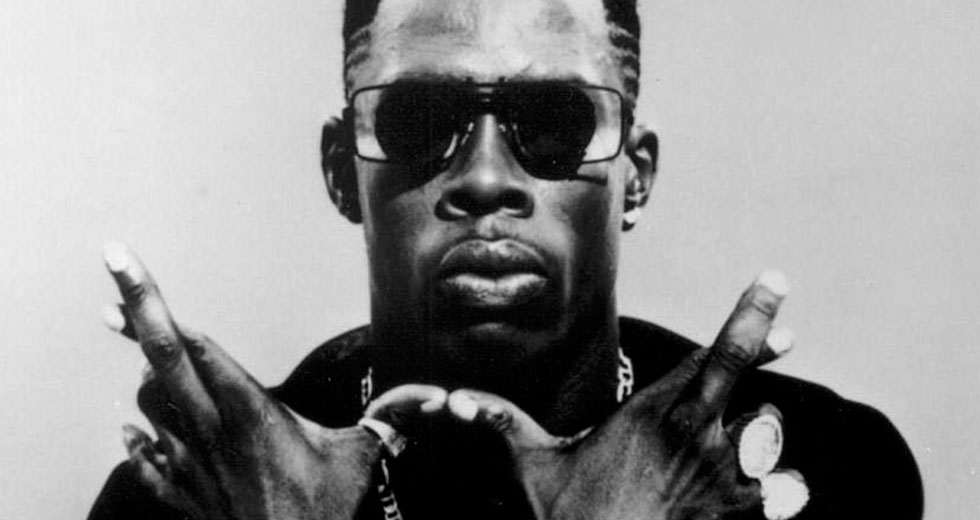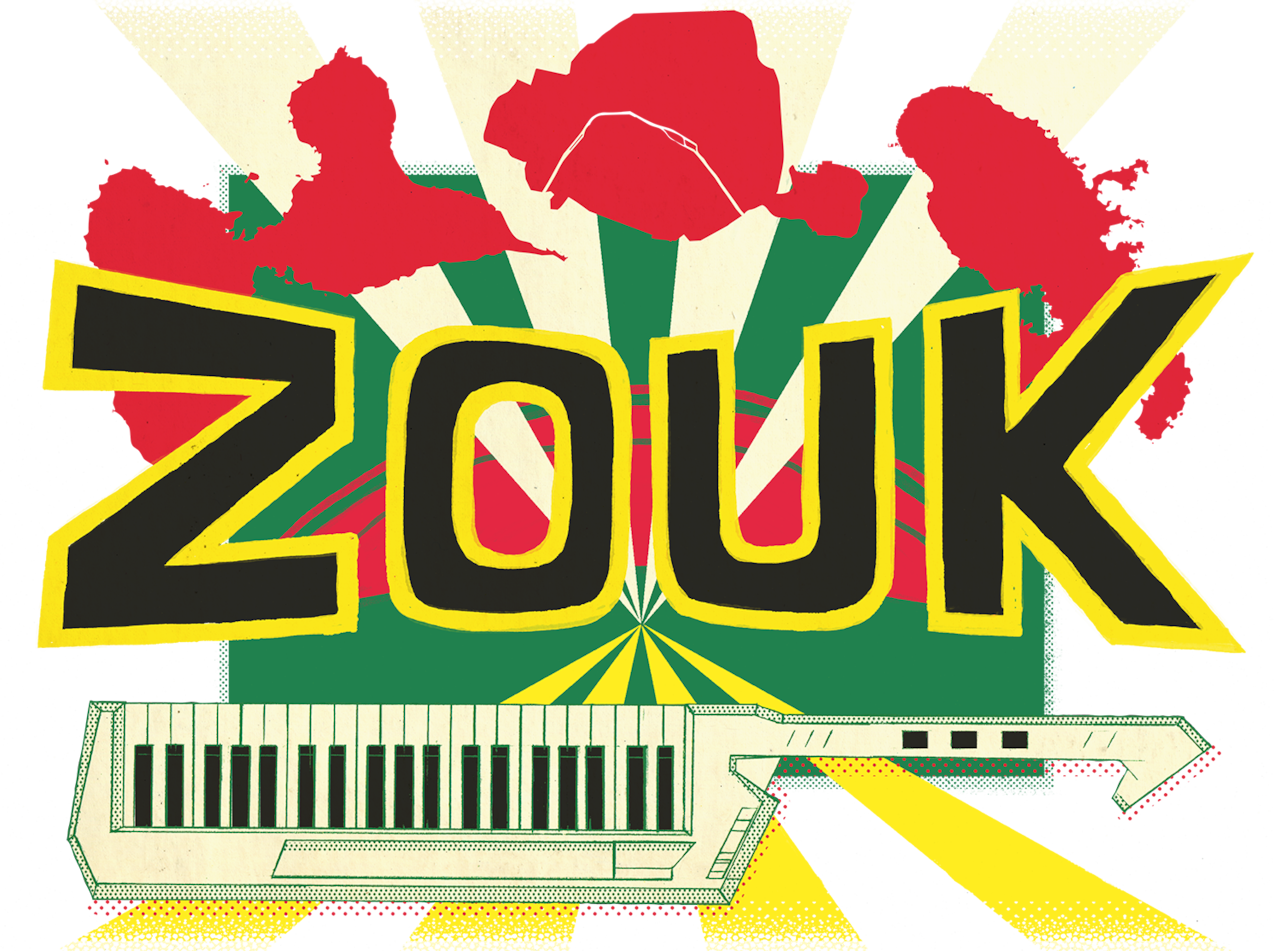
Zouk: An Introduction
One of the minds behind Sofrito Sound offers a beginner’s guide to one of the Caribbean’s most indelible (and underrated) genres.
As the voice of Michael Jackson rang out from practically every radio station worldwide, Sly & Robbie were ensconced at Compass Point Studios. Meanwhile, the Caribbean diaspora in London was riding the crest of the lovers rock wave as new soca warriors were dethroning the long-reigning calypso monarchs of Trinidad. In the Eastern part of the United States, electro and hip hop were emerging, and a new generation in Chicago and Detroit were laying the foundations for house and techno.
Every one of these sounds and movements were unique to their time and place, parallel developments that benefited from access to new studio technology and reflected the desire of the artists to express their surroundings and social realities through music. But whereas the origin stories of reggae, hip hop and house have passed into pop culture folklore, the sinuous, instantly recognizable drum machine-driven grooves of zouk have always stood on the outside.


Dismissed as ’80s excess within Metropolitan France, it was too foreign for an Anglophone audience and not-foreign-enough for the “world music” cognoscenti. Put simply, zouk has slipped through the cracks. Look past the initial preconceptions, though, and an important musical movement is revealed – a movement that not only broke through social boundaries but put the sounds and rhythms of the Francophone diaspora on the map, extending its influence worldwide in the process.
It is a story with two starting points: the Caribbean islands of Guadeloupe and Martinique, as well as Paris. The French capital and its suburbs have long been a global music capital, playing host to musicians from across the world. American-imported jazz, for instance, took hold in the city in the first half of the 20th century, strengthened by an eagerly-received exodus of American jazz musicians.
It wasn’t the same story, however, for the music and musicians coming from former French colonies in West Africa and the Dom-Toms such as Guadeloupe, Martinique, French Guyana and Réunion in the Indian Ocean.
While there has long been a history of immigration between France and its colonies, the social background of the zouk explosion centres around the French government’s Bumidom initiative of the ’60s and ’70s and attendant wave of migration between France and the Dom-Toms. Bumidom encouraged people to move to France as workers to boost the economy, with many taking up positions with the RATP (the Paris Metro) as well as in factories, hospitals and as domestic workers.
A great deal of these workers settled in Paris and its suburbs, suffering the same discrimination experienced by the Caribbean diaspora in the UK in the process. But whereas the Jamaican diaspora could look to reggae as a self-defining sound that reflected their experiences, the Francophone Caribbean diaspora had yet to unify around a sound that represented the new situation.
(An example of traditional Gwo Ka)
(An example of traditional Bélé)
The disparate states contained a large array of competing styles, from the increasingly old-time sounds of the biguine to the politically-engaged sounds of Gwo Ka and Bélé – musical styles that fiercely guarded the culturally distinct patrimonies of Guadeloupe and Martinique. Elements of all of these traditions – amongst many others – would be incorporated into a new style, one that was a reflection of and reaction to the situation that many found themselves in, and a way of defining it on their own terms and in a rapidly evolving setting.
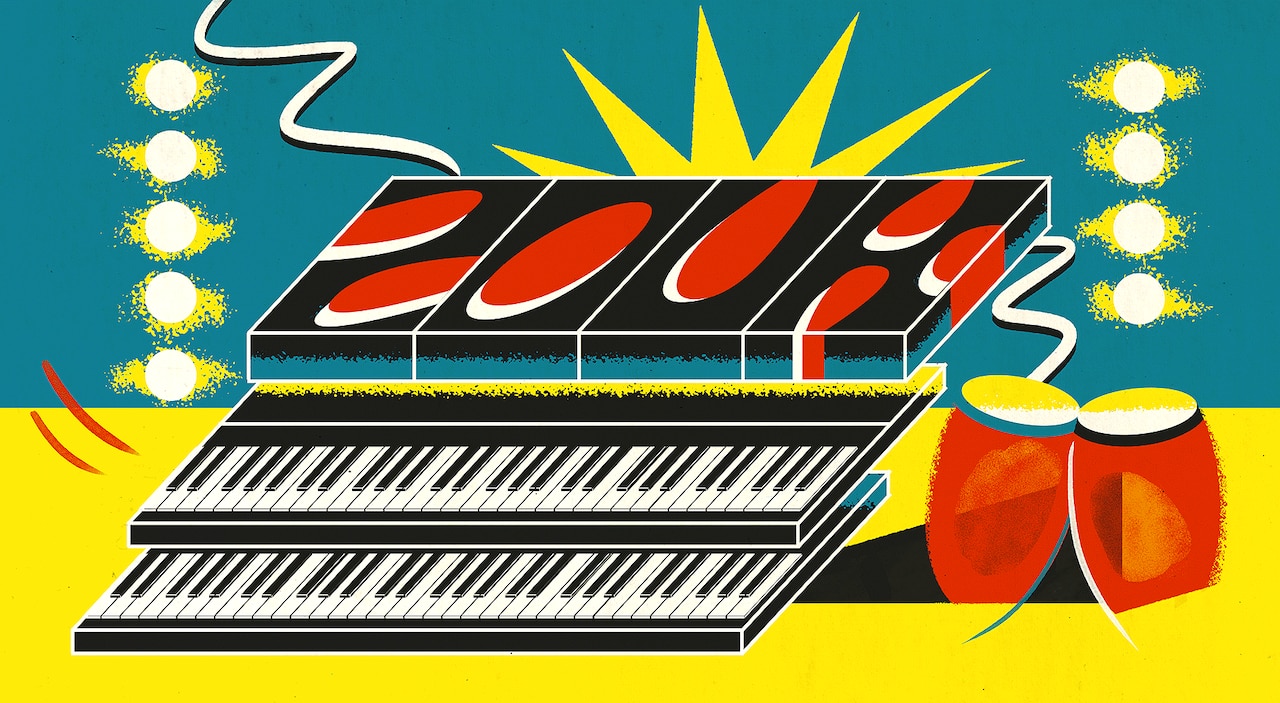
The large movement of people under the aegis of Bumidom also engendered a shift in where and how music was heard, moving the setting to a starkly urban environment far from the Caribbean. Musical spaces in the Caribbean were traditionally outdoor clubs and parties. In Paris, the action centred around large events in town halls (most notably in the 14th Arrondissement), clubs such as the Cabane a Rythmes in Pigalle, La Créole in Montparnasse, Le Soleil d’Or near Etienne Marcel and Gerard Laviny’s legendary Canne à Sucre, as well numerous clubs and community centres in outlying suburbs such as Aubervilliers, Evry-sur-Seine, St Denis and Aulnay-sous-bois.
Prior to the growth of DJ-led venues in the early ’80s these parties were mainly soundtracked by live bands. Paris-based groups such as Galaxy, Les Diplomates and Max Loubli’s El Nuevo Combo would run the gamut of the popular styles of the day, each style and its original proponents subsequently laying claim to be the hotly-contested point zero of zouk.
So controversial are the roots of the style that even the origins of the word zouk are contested. It could come from the “Mazouk” rhythm (an adaptation of the European Mazurka), part of the traditional repertoire of Caribbean dance bands of a previous generation alongside the Biguine and the Valse. Equally it could come from the French word sécouer (literally meaning to shake) – also nominally the origins of Congolese Soukous.
Its musical origins are equally as hazy, more the result of many sounds coming together than a product of a single source. Haitian musicians claim zouk as an offspring of the Compas sound that ruled the dancefloors and airwaves of the Caribbean throughout the ’70s – the commercial high point of which was Tabou Combo’s crossover 1974 hit “New York City” that spawned a legion of imitators.

(An example of the Dominican sound of Cadence-lypso)
The Dominican sound of Cadence-lypso – led by Gordon Henderson and Exile One along with the Grammacks and the Midnight Groovers – briefly dominated the dancehalls at the tail end of the ’70s, bringing the cowbell to the front and lyrics in Créole closer to that of Guadeloupe. Many of these bands – including other stars such as Les Vikings de Guadeloupe, Experience 7 (later to become Zouk Machine), Les Aiglons and Martinican stars La Perfecta – toured extensively, both in the Caribbean and for the diaspora in France throughout the ’70s.
All the while Puerto Rican salsa and Dominican merengue were present alongside American soul, R&B and disco, as well as Congolese rumba/soukous carving its own path through the dancehalls of the metropole and – to a much lesser extent – through the Caribbean.
Zouk is – broadly – a product of these surroundings and of all of the styles played at parties and in clubs – parties that, in créole, were themselves known as zouks. To “zouk” was (and is) to party – “On zouk ou ce soir?” “ça Zouk bien!” As such, you can draw parallels between the development of zouk and the birth of house music in the US. House took its name from the late ’70s Warehouse club in Chicago, where resident DJ Frankie Knuckles combined various styles to create a unique blend that came under the catch-all term of house music.
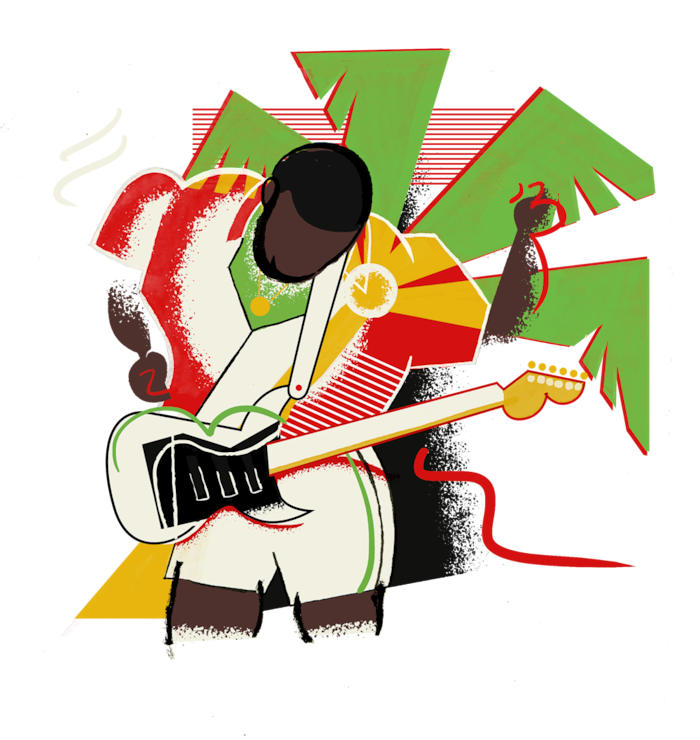
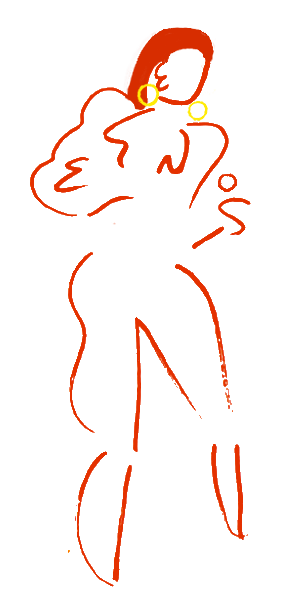

If house comes from a unique combination of social and musical factors in Chicago, then zouk is equally a distillation of the popular styles of the time, although in an altogether different setting – a distillation that took place in several places: the islands of Guadeloupe and Martinique (its spiritual home), and the clubs and studios of Paris.
If there is a Frankie Knuckles-type figure for zouk it is not a DJ but a group – Kassav. The band had twin figureheads of the new sound: multi-instrumentalists and producers Jacob Desvarieux and Pierre-Edouard Décimus. Desvarieux, Décimus and Freddy Marshall formed the group in Paris in 1979. It was born out of a collective desire to produce a world-beating créole musical force, and to do so firmly on their own terms.
First and foremost, the lyrics were in créole – a strong political statement, as the French had previously expended not a little energy in trying to wipe out the language by banning its teaching in schools and use on the radio.
The rhythms and styles were drawn from the parties/zouks that the musicians had already been involved in for more than a decade – Décimus as bassist for Les Vikings de Guadeloupe and Desvarieux as a highly seasoned Paris-based session musician. The difference was the equipment now available to them in Parisian studios: Décimus and Desvarieux experimented with drum machines and synthesizers, grafting elements of distinctly Antillean Gwo Ka rhythms onto a steady beat that sat somewhere between Haitian Compas and American-influenced funk, beefed-up with percussion in the form of the Tambour and Ti-Bois.
(An example of the Chiré" style)
Complex horn arrangements – represented by a truly international line-up of Algerian, Armenian, Belgian and Hungarian players – the lethal basslines of Pierre-Edouard’s brother Georges Décimus and (after the first couple of albums) virtuoso piano playing from Jean-Claude Naimro completed a sound that was leagues beyond the means of most Caribbean-based musicians. The Kassav repertoire itself touched on numerous bases – from the fast “Chiré” style that was indebted to the Guadeloupean “Mas a St Jean” carnival rhythms – to slower, languid songs that would later give birth to Zouk Love and Kizomba.
(An example of Zouk Love/Kizomba)
Taking their cue from the American model typified by the Motown revue and the sprawling approach of George Clinton’s Parliament/Funkadelic, Kassav consisted of a core group with each member releasing separate solo albums, tracks from which would be included in live shows, producing a kind of super-group that not only allowed for greater musical experimentation but also took control of the business and production side of the music – territory previously closely guarded by producers who often tied musicians up with restrictive contracts heavily weighted in their own favour.
Initially garnering respectable if not overwhelming success with a series of disco/boogie indebted albums over the first few years, Kassav – and the codification of the zouk sound – would firmly arrive in 1984 with the hit “Zouk le sel Medikamen a nous!” (Zouk is the only medicine we have!) Drawing influences from the Guadeloupean Mendé rhythm, the track pulled an insistent guitar riff and call-and-response vocals over an almost ludicrously bouncing beat – a beat that would go onto define zouk in much the same way Steely & Clevie’s dembow riddim would form the bed-rock for legions of reggaeton producers in the Dominican Republic.
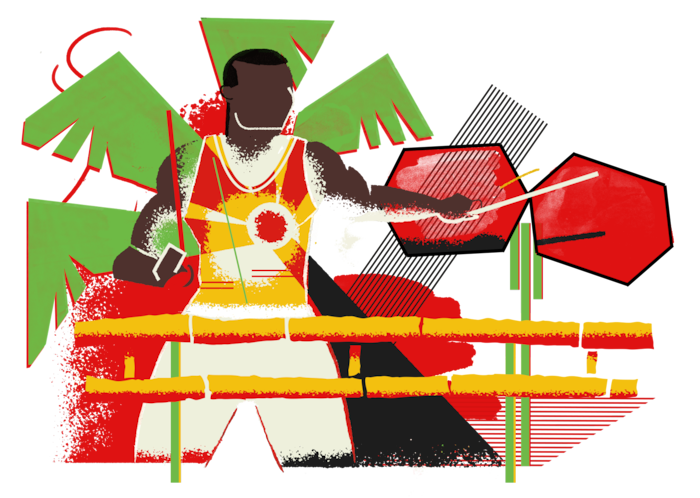
Following the single, Kassav swiftly became a monstrous success – filling the enormous Zenith concert hall in Paris for six successive nights in 1987, touring across France and filling stadiums in West Africa – and were enthusiastically adopted as popular standard-bearers for a culture that was all-too-often sidelined by the French mass media.
To fill the Zenith multiple times without the help of traditional media was (and is) no mean feat, but Kassav spoke to a generation and sector of society ignored by the mainstream. It didn’t hurt that President Miterrand “liberated” French radio in 1981. Prior to this, the French state had a monopoly on all radio broadcasts, a situation that allowed the government to set the agenda and control the flow of both information and music.
With the opening of the airwaves and the arrival of the so-called “Radios Libres” there was an immediate flowering of stations in France. The newly-formed Tropic FM (subsequently superseded by the similarly-named Tropiques FM), Radio Latina, Radio Nova and others could suddenly broadcast what they wanted, giving a voice to communities that had never been represented on the state radio. As the voice of a new generation that had a foot in both the Caribbean and Europe, Kassav were one of the first groups to capitalize on this change and were heavily playlisted on the new French stations.
Too often zouk is regarded as a dismissible, saccharine form of pop music. To many, though, it’s a celebration of a sector of the Francophone (and more importantly Créolophone) diaspora, one that is born out of both a physical movement of people and expanding technical studio possibilities, all against a backdrop of social change as France struggled to come to terms with its colonial legacy.
It is a style that has extended its influence worldwide: into the rest of the Caribbean, South America, West Africa, the Indian Ocean and innumerable clubs the world over. Listen to the house sounds of Angola, South Africa and Kenya and you will hear the distinct swing and phrasing of vintage Kassav, as well as the one-off productions so highly-prized by a new generation of electronic producers – records that were once omnipresent in French flea markets and are now highly sought after by people that have little if any connection with the circumstances of their production. Desvarieux and Décimus’ aim (along with innumerable other artists) was to create a truly international sound and style, and now a distinct Créole voice and rhythm is heard across the world.
Illustrations: Lewis Heriz
Header image © Lewis Heriz

